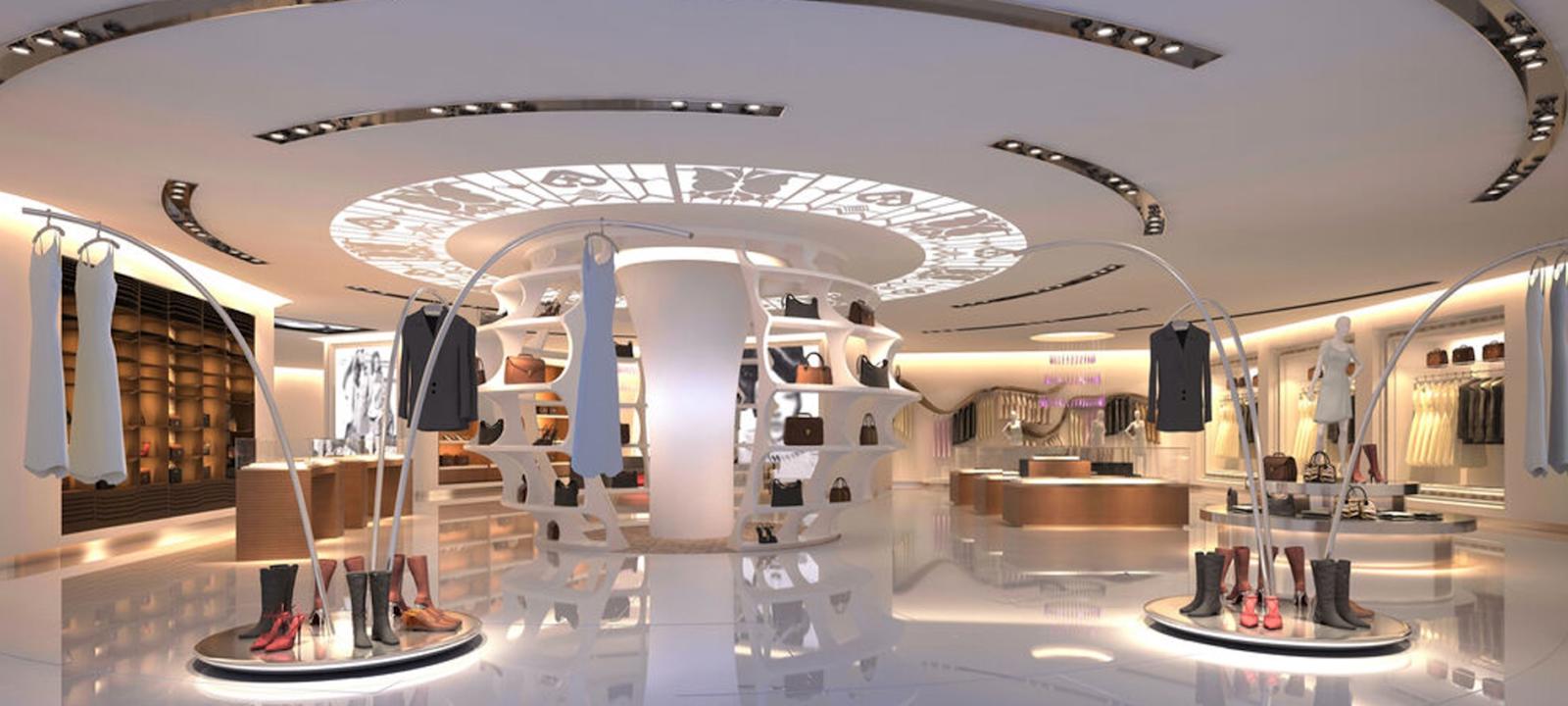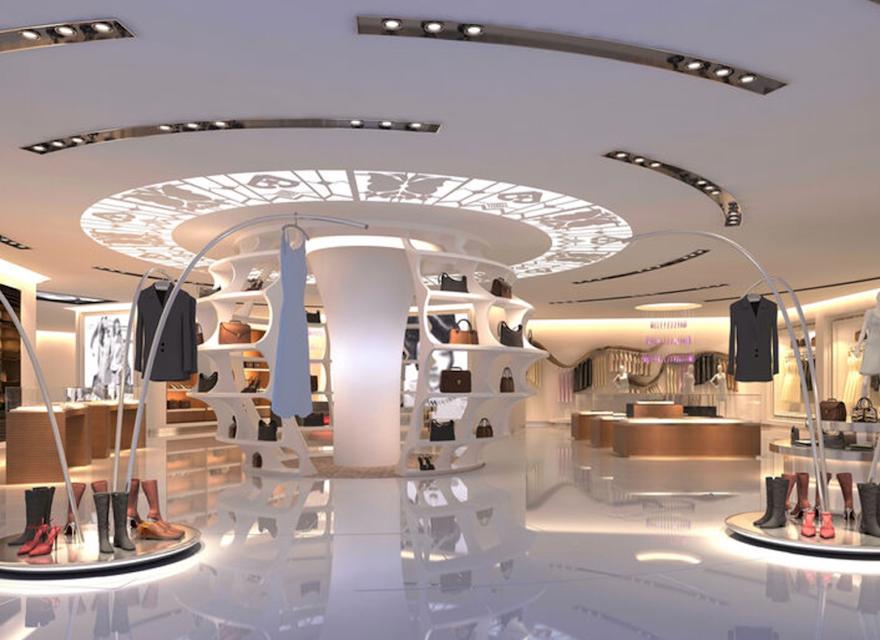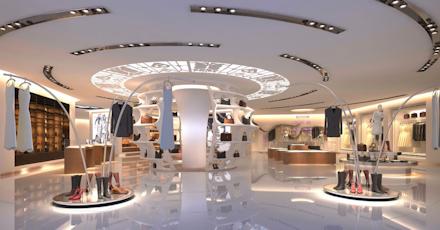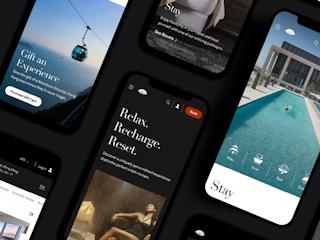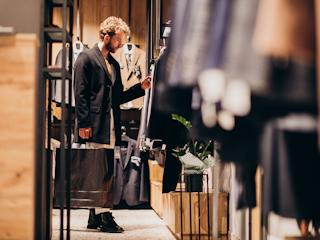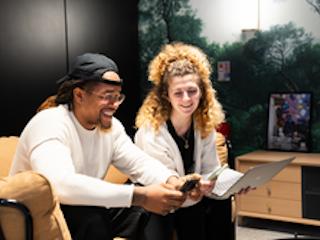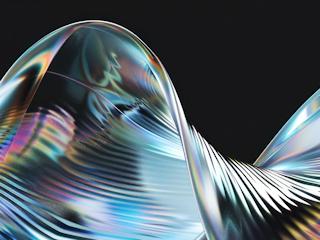Alongside leading voices from across the industry, Valtech’s Global Retail Strategy Lead, Pascal Malotti, and Tanja Filipovic, Regional Luxury Strategy Partner, discussed how augmented retail is becoming the new standard for customer experience.
Augmented retail: Luxury’s next leap
Augmented retail is commerce in its most advanced form — and leading brands are already using it to deliver tomorrow’s shopping experiences today.
These innovative brands do more than sell. They stage, interact and tell stories. Stores are responsive spaces and narrative environments where people come to have a sensory, emotional and personalized experience.
Below, we recap the LinkedIn Live session, discussing three ways augmented reality is changing the retail experience and how luxury brands are leading the way.
Three major shifts shaping tomorrow’s retail experiences
1. The space: A responsive, intelligent environment
The store of tomorrow is built to adapt to the customer experience. Consider the COS store at The Coal Office in London, which features interactive mirrors and sensory detectors. Farfetch’s Store of the Future also exemplifies this evolution with advanced technologies like RFID, smart fitting rooms and intelligent racks.
What’s especially fascinating is how these technologies are becoming invisible. They blend seamlessly into our environment, creating a frictionless experience where technology fades into the background and the human element is enhanced.
A "phygital" approach lies at the heart of these innovations. One where digital advantages (personalization, data, efficiency) enhance the in-store experience without replacing it.
These spaces become almost organic, capable of adapting lighting, temperature or music to each visitor’s needs.
With ethical facial recognition or invisible personalization, the physical space opens up to client recognition without intrusiveness, putting privacy and comfort at the center of the experience.
2. The experience: Theatrical storytelling
Tomorrow’s store is a stage. SKP-S, a luxury department store in Beijing that is designed like a futuristic Mars expedition, is a spectacular example.
Each floor is an immersive installation that blends art, technology and sensory experiences. Visitors explore surreal worlds, like a “Digital-Analogue Farm” where robots cultivate mechanical vegetables and “Eternal Life,” which showcases alien life forms in a futuristic lab.
Gentle Monster follows a similar approach. Each store is a temporary exhibition, where the product becomes secondary to the story it supports.
In Shanghai, the Starbucks Reserve Roastery offers another radical theatrical experience: a 2,700 m² space centered around a monumental roaster, transparent ceiling pipes and multisensory immersion.
This high-tech storytelling answers the question at the top of every retailer’s mind: why visit a store when everything is available online? Emotion.
In the face of online shopping’s growing ubiquity, these in-store experiences create memorable moments, placing the product and its origins in a meaningful narrative.
Brands that succeed here understand that the product is just one part of a broader narrative. A narrative that resonates with consumers' values and aspirations. They sell products. But they also sell experiences, emotions and a sense of belonging to like-minded communities.
This marks a major shift in commerce, where value moves from the product to the experience around it. The store becomes a living media space — a narrative environment where every detail reinforces the brand identity and builds an emotional connection with the visitor.
3. The people: The rise of the augmented advisor
As spaces evolve, so do roles. Tomorrow’s retail advisor is part salesperson, part stylist and part hyper-connected guide:
-
At Galeries Lafayette on the Champs-Élysées, salespeople use tablets linked to a personal stylist hub that integrates purchase history and customer preferences.
-
At Muji’s flagship in Ginza, Japan, staff become "lifestyle advisors" leading workshops on functional design.
In the near future, advisors will detect emotions in real-time, combine them with behavioral data and adjust their communication on the fly. The line between advisor and personal influencer will blur, balancing human expertise with algorithmic precision.
This transformation reflects a consumer paradox: the desire to be both autonomous and expertly guided.
The augmented advisor resolves this paradox, not by dictating, but by making relevant suggestions. They don’t replace personal choice but illuminate it through contextualized, personalized information.
They become experience curators — translators between the brand’s values and the customer’s aspirations — guiding each visitor through an increasingly complex and saturated commercial landscape.
Luxury retail transformation is accelerating
Any discussion of retail revolutions isn’t complete without mentioning the luxury houses.
We’re at a pivotal moment. Retail is undergoing a metamorphosis and luxury must reinvent itself. Here are concrete examples from a sector in active transformation:
Maison Chanel: Innovation as the new know-how
Innovation today is a new form of craftsmanship. In luxury, it amplifies know-how and deepens client intimacy. Chanel offers two examples of tech innovation directly enhancing tomorrow’s luxury experience.
Maison Chanel embodies this at its 19M site in Paris, an architectural tribute to the arts and crafts. Through curated exhibitions like the one celebrating 100 years of Maison Lesage, Chanel transforms craftsmanship into an immersive cultural experience.
This ambition is also reflected in Chanel’s beauty workshops in Paris and New York. These hybrid spaces — part boutique, part creative studio, part sensory lab — offer AI-powered skin diagnostics, immersive makeup cabins and personalized interactions with beauty advisors via mobile app.
Digital is fully integrated with one goal: to foster closer relationships around the brand’s knowledge.
Dior: hyper-personalization becomes the luxury standard
Hyper-personalization used to be a privilege. Now it’s a customer expectation.
Dior’s Gallery Boutique on Avenue Montaigne exemplifies this, combining immersive retail, museum experiences and ultra-personalized services. With augmented pathways, visitors can virtually explore workshops, try clothes in connected fitting rooms and customize items in 3D using digital twins.
The aim is to elevate brand storytelling and digitally embody heritage. Even fragrance becomes a storytelling medium through augmented reality rituals that tell Dior’s story and embed the purchase in a sensory and narrative experience.
Chaumet, Bvlgari: Sustainability takes center stage
Intimacy is being highlighted in luxury jewelry retail. In Tokyo, Chaumet and Bvlgari have redesigned their flagships as intimate, sensory environments focused on emotion and personalization.
Clients embark on digital journeys, discovering stones through holograms, enjoying sensory salons and participating in personalized jewelry selection rituals or interactive engraving based on personal intentions.
Discovery becomes emotional storytelling. Engraving becomes symbolic and meaningful. And both innovations support sustainable luxury retail through tech-enabled personalization.
Hermès: “Quiet luxury” as a principle
In a “quiet tech” approach, some houses discreetly integrate digital within an aesthetic of elegance and refinement.
Hermès demonstrates discreet digital integration at its flagship in Ginza, Tokyo.
Technology is omnipresent, but never showy. VIP clients can book private meetings in confidential salons via video call, benefit from invisible recognition systems for seamless service and experience AI-assisted fragrance consultations.
The result? A flagship experience combining intimacy, tradition and seamless innovation in the service of the client.
Burberry, Louis Vuitton: The Boutique as a Temple of Experience and Narrative Studio
At Burberry in Shenzhen, the store is conceived as a connected social hub. Innovation drives gamified experiences via WeChat, such as:
-
Virtual try-ons of exclusive items
-
Personalized content
-
Reward systems based on digital interaction.
The goal is to build community loyalty by merging local digital culture with the brand’s heritage.
Louis Vuitton follows a similar path with spaces like its Tokyo flagship or LV Dream in Paris, where hybrid experiences blend immersive museums with retail. These include narrative phygital journeys via QR codes, co-creation tablets and NFTs used in select collaborations.
The aim? To anchor the brand in cultural relevance and generational co-creation.
The next step for luxury
In conclusion, the store is evolving into a temple of emotion-rich, ultra-personalized experiences powered by innovations like scent sensors, smart mirrors, emotion recognition, augmented reality and predictive AI.
The store of the future will be neither fully digital nor purely physical, but a living, narrative and sensory space. For brands building this future today, Valtech is a key partner helping luxury houses transform their experiences, formats and customer relationships.
Valtech is the experience innovation company. We unlock a better way to experience the world through five pillars: Experience Elevation, Commerce Acceleration, Enterprise Transformation, Marketing Creativity & Performance and Data & AI Revolution.
Explore our work in the luxury sector or watch the LinkedIn Live episode to hear Pascal and Tanja’s thoughts in full.
If you’re ready to see how Valtech can bring your ideas to life, then contact our experts today for a consultation.
See where luxury retail leaders are investing next:
